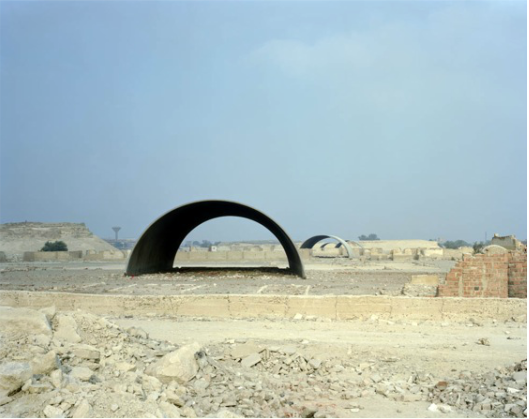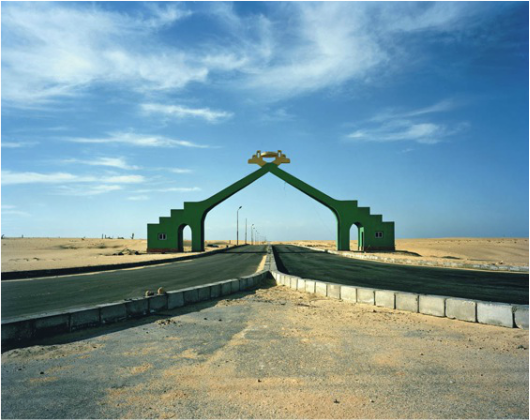Welcome to the desert of the real

The above pic from a gallery by Julien Chatelin at Guernica:
The images of a crowded and riotous Tahrir Square are the most recent portraits of Egypt burnished in the public imagination. They offer a glimpse into a constantly evolving narrative of a nation whose political upheaval has transformed our understanding and perceptions of politics in the Arab world.
Far from Cairo’s tumultuous center, however, lies a world trapped in time, cities littered with the remains of real-estate promoters’ pharaonic projects. It is an abandoned landscape where a solitary figure wandering the empty streets seems to endlessly linger, and the half-built apartment buildings scattered on the sides of the road give the impression not only of defeat, but a cruel absurdity.
These images are wonderful, and really do capture the surreal nature of scenes on Egypt's desert roads. To me they evoke something quite specific, as many of the structures in the pictures are of abandoned military installations and a lot of that desert land once belonged or was controlled by the military. Military installations that serve no purpose, military land that was sold for profit — all symbols of a military whose greatest success has been snatching domestic political victories from multiple defeats on the battlefield, which exiled or put under house arrest its few heroes, whose own grasp on power is more brittle than it has ever been, even if it retains terrible repressive powers. In this sense the surrealism of Egyptian politics is a reflection of the cognitive dissonance between the military's claim to being the last great institution left standing and its sheer mediocrity.
Mediocrity can still crush bones and crack skulls, of course. Egypt is divided, political factions are cowardly and mistrustful of each other, and there is little appetite for further unrest. The country has reached a fork in the road, yet two years ago who could even guess that there was a choice ahead?

